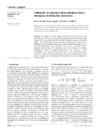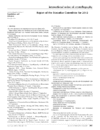issue contents
July 2014 issue

Cover illustration: The mathematical tools used by crystallographers began as abstract models of physical or theoretical structures. As the demand for more powerful tools grows, so grows the demand for sophisticated and fundamental models of crystals and crystalline materials. Clockwise from top left: images from Quiquandon et al. [Acta Cryst. (2014), A70, 229-238], Hyde et al. [Acta Cryst. (2014), A70, 319-337] and Moriera de Oliveira & Eon [Acta Cryst. (2014), A70, 217-228].
advances
research papers


 access
accessmathematical crystallography
editorial

research papers
foundations
research papers
short communications
international union of crystallography



 journal menu
journal menu





























